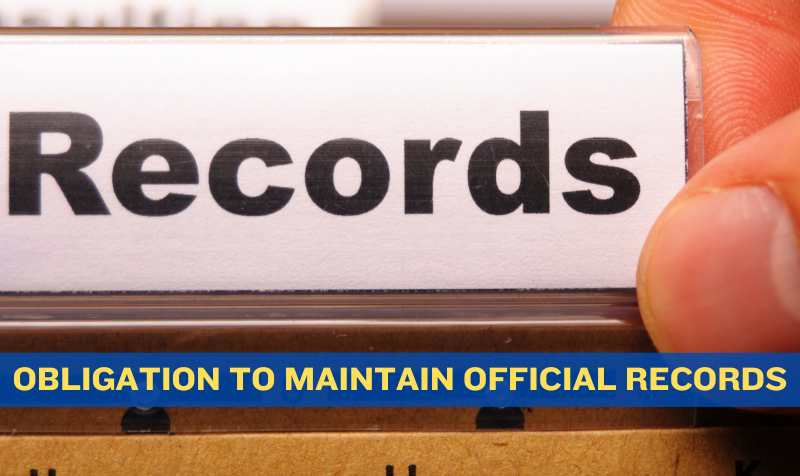Guest Columnist: Danielle M. Brennan, Esq. B.C.S. [Kaye Bender Rembaum]
As directors and managers of community associations, it is likely that you are very familiar with disability-related requests for reasonable accommodations under the Fair Housing Act, particularly requests for accommodation to pet restrictions so that a disabled person may have an assistance animal within the community. However, the failure to grant reasonable accommodations is not the only form of disability discrimination under the Fair Housing Act.
The Fair Housing Act also makes it unlawful for a housing provider to refuse to permit, at the expense of the disabled person, reasonable modifications of existing premises occupied or to be occupied by such person if such modifications may be necessary to afford such person full enjoyment of the premises. For example, reasonable modifications may include widening doorways to make rooms more accessible for persons in wheelchairs, installing grab bars in bathrooms, lowering kitchen cabinets to a height suitable for persons in wheelchairs, adding a ramp to make a primary entrance accessible for persons in wheelchairs, or altering a walkway to provide access to a common use area.
In order for an individual to be entitled to a reasonable modification under the Fair Housing Act, the individual must first make a request for a reasonable modification. An individual makes a reasonable modification request whenever he/she makes clear to the association that he/she is requesting permission to make a structural change to the premises because of his/her disability. Although the association may adopt and use specified forms and procedures for processing modification requests, the association cannot refuse a request because the individual does not use the specified form or follow the established procedures. All the individual needs to do is make the request, orally or in writing, in a manner that a reasonable person would understand to be a request for permission to make a structural change because of a disability.
As part of the request, the individual must (i) establish that he/she is disabled (i.e., the person has a physical or mental impairment that substantially limits one or more major life activities) if the disability is not already known to the association or readily apparent; (ii) describe the type of modification requested; and (iii) explain the relationship, or nexus, between the requested modification and the individual’s disability.
The association is required to provide a prompt response to a reasonable modification request. An undue delay in responding to a reasonable modification request may be deemed a failure to permit a reasonable modification. There is no clarity as to what constitutes a “prompt response” or “undue delay” for a reasonable modification. However, if we are to borrow from guidance from the U.S. Department of Housing and Urban Development regarding reasonable accommodations under the Fair Housing Act, then a response should be issued within ten days.
The failure to permit a person with a disability to make a reasonable modification or the failure to promptly respond to a request for a reasonable modification is deemed discrimination under the Fair Housing Act. If discrimination is found to have occurred, the association may be subject to an injunction, forcing the association to permit the requested modification, and an award for damages, which may include punitive damages. In addition, violations of the Fair Housing Act are one of the few instances in which individual board members may be held personally liable for such violations. Given the potential for liability and the many factors which must be considered upon receiving such a request, the board must carefully evaluate a request for a reasonable modification in a timely manner and on a case-by-case basis.
The association cannot condition its approval of the requested modification upon the payment of a security deposit or the purchase of additional insurance and cannot insist that a particular contractor do the work. However, the association can require that the unit owner obtain any building permits needed to make the modification and that the work be performed in a workmanlike manner. From a practical perspective, there will need to be coordination between the association and the unit owner, for example, to obtain whatever permits may be required and to schedule the work, given that the modification may be made to the common areas owned by the homeowners’ association or the common elements controlled by the condominium association.
As to the modification itself, the disabled person is responsible for determining the type of modification and for payment of the costs of the modification. Generally, the association cannot insist on an alternative modification, particularly if the requested modification is to the interior of the unit. However, if the requested modification is to the common area or common elements, the association can propose an alternative modification (e.g., different type of modification, different placement, different design, etc.). However, if the association’s proposed alternative modification costs more than the modification requested by the disabled person, the association will be required to pay the difference.
Once the modification is installed, whether the disabled person or the association will be responsible for the upkeep and maintenance of the modification will depend upon where the modification is located and who is able to use the modification. As to modifications made to the common areas or common elements, if the modification is used exclusively by the disabled person, such person is responsible for the upkeep and maintenance of the modification. However, if the modification is installed on the common areas or common elements which are normally maintained by the association and may be used by others, the association is responsible for the upkeep and maintenance of such modification under the Fair Housing Act.
Although some modifications to the interior of the unit must be restored if requested by the association when the disabled person vacates the unit, the association cannot require the disabled person to have a modification made to the common areas or the common elements removed and area restored.
Additionally, the Fair Housing Act controls over the provisions of the governing documents of the association and any requirements of Chapter 718, Florida Statutes. For example, even if the modification is a material alteration or substantial addition to the common elements or association property subject to membership approval under a community association’s governing documents and/or section 718.113(2)(a), Florida Statutes, such membership approval would not be required for a reasonable modification under the Fair Housing Act. However, the board still must approve the requested modification at a properly noticed board meeting, and the minutes of such meeting must reflect the board’s approval of same.
Regarding property insurance for modifications to a condominium’s common elements, section 718.111(11)(f), Florida Statutes, requires that the condominium association carry adequate property insurance for primary coverage of all portions of the condominium property, only excluding from such coverage the following which is the responsibility of the unit owner: 1) all personal property within the unit or limited common elements and 2) floor, wall, and ceiling coverings; electrical fixtures; appliances; water heaters; water filters; built-in cabinets and countertops; and window treatments (including curtains, drapes, blinds, hardware, and similar window treatment components); or replacements of any of the foregoing which are located within the boundaries of the unit and serve only such unit. Therefore, if modifications are not within the unit or the limited common elements serving the unit, the condominium association is responsible to carry property insurance for the modification and will be responsible for the reconstruction, repair, or replacement of the modification if it is damaged by an insurable event.
Finally and importantly, because there are so many ways for a board to create legal liability when handling reasonable modification and/or reasonable accommodation requests, the board and manager should absolutely involve the association’s attorney, particularly if the board is going to request additional information or deny the request. Simply asking the wrong question can create legal liability for an association, such as asking for additional information regarding a person’s disability when the disability is readily apparent. Because there are so many ways to misstep in this arena, significant caution is advised.










